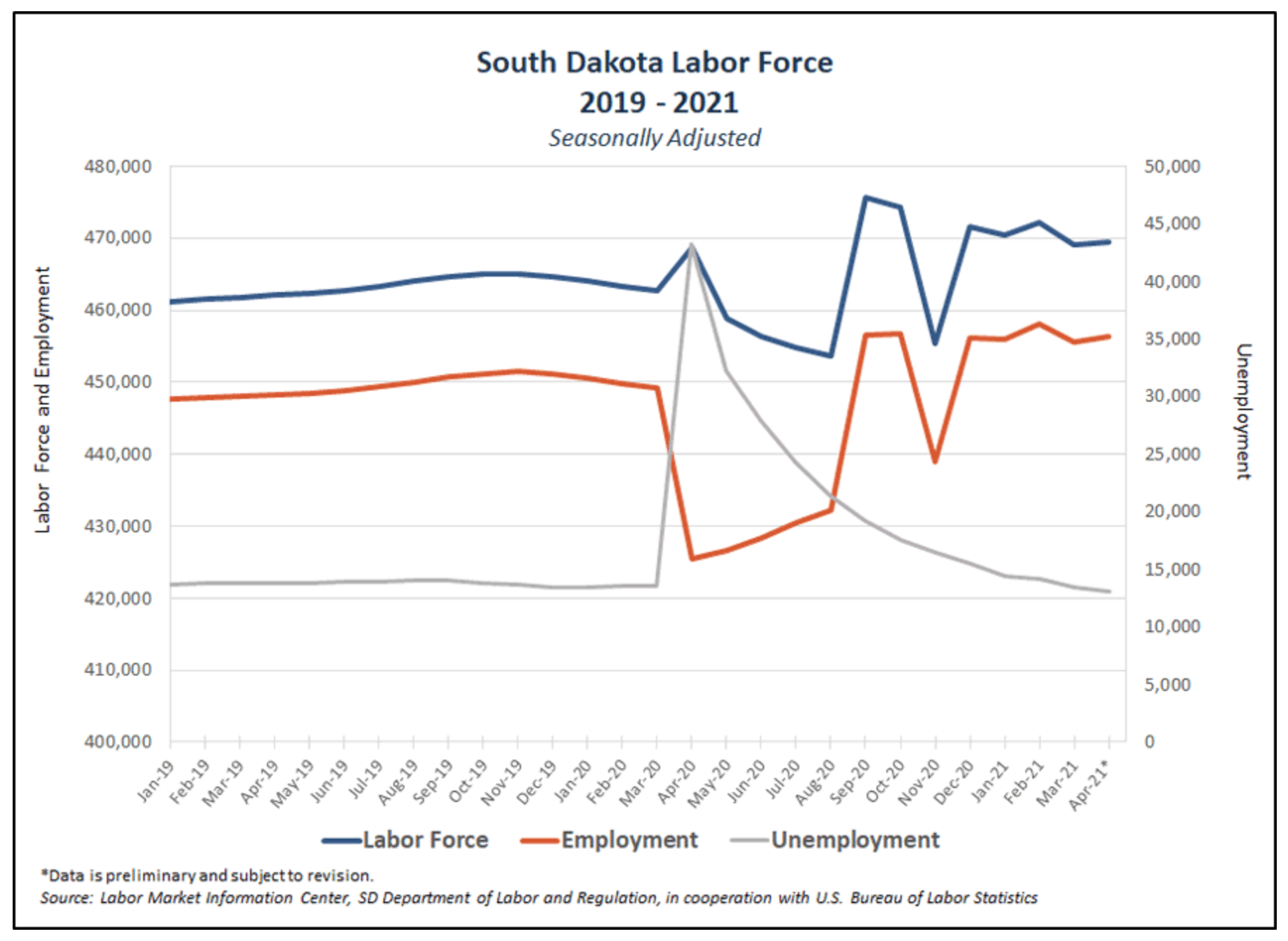Simplified: A year after peak unemployment, South Dakota women still make up a higher-than-average percentage of people collecting unemployment.
Why it matters:
- Women saw a surge in job loss last spring, with more than 13,000 collecting unemployment in April 2020. That's compared to just over 9,000 men.
- The latest data from the U.S. Department of Labor shows that in April 2021 just under 1,000 women were collecting unemployment. That's slightly more than double the number of women collecting unemployment in April 2019.
- In a typical April over the last decade, three in four people collecting unemployment in South Dakota were men because of claims from construction and manufacturing. During the pandemic, it flipped.
"In the pandemic, we really saw some changes that we hadn't seen before," South Dakota Secretary of Labor Marcia Hultman said. "(In April 2020) 59.6 percent of claimants were females."
That was a year ago. Aren't there jobs everywhere now?
- There's no one reason that explains why women in South Dakota are still seeing a higher unemployment rate than average.
- Part of it is related to child care. Though most South Dakota schools stayed open through the 2020-21 school year, Hultman said, many families still may have been navigating virtual learning or the choice to keep children at home.
- Another possible factor is that women who were laid off may have taken time to think on the type of job they want when they do go back into the workforce.
- One thing Hultman can rule out as a factor? Closures in the hospitality and service industries.
"If anything, there is a great demand in those industry sectors," Hultman said. "Look at all the help wanted signs."
Ok, so then why should I care?
Because job loss due to the pandemic is still affecting women in our community.
That includes women like 28-year-old Dani Allen, who lives near Dell Rapids. She's a self-employed hair stylist, and when the pandemic hit she saw her customers disappear.
She decided to shut down for a couple months, partly because of the lack of customers and partly so she could care for her and her husband's then-1-year-old.
"I just made the decision to stay home, and then my husband kept working," Allen said. "I was at home for two months, and then my husband got laid off. ... So then I came back to work. I did what I could."
But it was nowhere near pre-pandemic levels, and she kept filing for unemployment until September to help make up for lost income.
Today, she's done collecting unemployment and is working full-time, but her business is still slower than pre-pandemic levels.
She's in a comfortable place now, but she's got hairstylist friends in other states who have had it worse, she said, especially those with children.
"It just seems like women are the ones that have to sacrifice their job, which is so unfortunate," she said.


